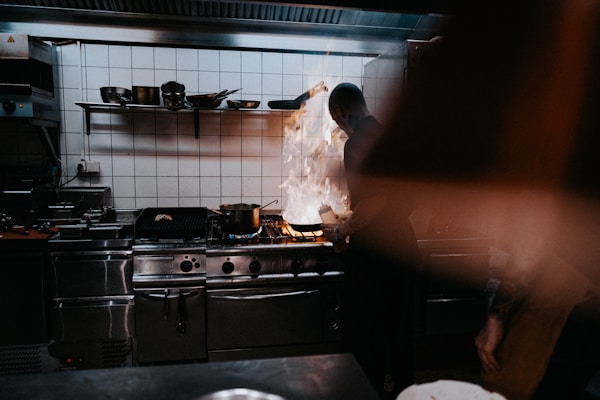As a business owner, you know that it’s important to keep your grease trap functioning properly. If it starts to overflow, it can cause all sorts of problems for your business and the environment. But don’t panic. There are a few things you can do to fix the problem. Keep reading to learn what to do if your grease trap starts to overflow.
What is a grease interceptor used for?

A grease trap is a device installed in commercial kitchens and restaurants to collect fats, oils, and grease (FOGs). These devices work by trapping the FOGs in a container where they will cool and solidify. The trapped material can then be removed and disposed of properly. If your grease trap starts to overflow, there are a few things that you can do to try to fix the issue:
First, ensure you are not putting too many FOGs down your drain. Try to avoid pouring cooking oil or bacon fat down the drain. Instead, put these items in a trash can or compost bin. If the problem persists, you may need to have your grease trap cleaned out. Contact a professional plumber to come out and clean it for you. Finally, if the problem continues, you may need to install a larger grease trap. Talk with a grease trap service about which size trap would suit your needs.
How do you know the proper size for a commercial grease trap?
If your grease trap starts to overflow, you can do a few things to mitigate the issue. The first step is to understand how to size a grease interceptor properly. A grease trap should be sized according to the amount of wastewater flow it will be handling. If it’s too small, it won’t be able to handle the wastewater flow and will start to overflow. If it’s too large, the trap will fill up with grease faster than it can drain, leading to overflows.
Once you’ve ensured that your grease trap is the correct size, you can take a few other steps to prevent overflows. Ensure that food waste isn’t being washed down the sink drains into the grease trap. Also, ensure that the traps are regularly cleaned, so they don’t become clogged with debris.
What can you do if your commercial grease interceptor starts to overflow?

If your commercial grease trap starts to overflow, the first thing you should do is try to determine the cause of the overflow. If you can determine the cause of the overflow, address it as soon as possible. If it’s a blockage in the sewer line, for example, you’ll need to have it cleared. This can be done by using a plunger or a shop vac. If the clog is not too severe, this should take care of the problem. If the clog is more significant, you may need to use a snake to clear it. If it’s a problem with the pump or drainage system, you may need to have those components replaced.
If that doesn’t work, you should call a professional plumber or grease trap technician. They will be able to assess the situation and determine the best course of action for fixing the problem. In some cases, it may be necessary to clean or replace the grease trap altogether. Overflowing grease traps can cause major problems, including sewage backups. A professional can clean the grease trap and get it back up and running.
If your grease trap starts to overflow, it’s important to take action immediately to prevent further damage. The overflow can cause problems with the plumbing and wastewater system and can also be a health hazard. Having your commercial grease trap cleaned and regularly maintained can help prevent any overflow.


